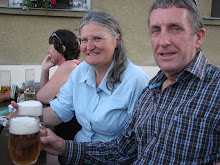It was destroyed by the Persians in 306 BC and under the Romans from 294 BC to 58 BC it flourished. In the 6th and 7th centuries it was raided by the Arabs and left in ruins.
We followed the site maintenance crew as they put in new information boards around the area, which was wonderful, as we would not have been able to work out what the jumble of rocks were otherwise.

From the ruins we could see it would have been an impressive city. There was a huge gymnasium with hot pools, steam rooms and cold water pools. The baths under floor heating system was still distinguishable from the ruins. I sat on one of the 44 flush toilets off the exercise yard.

In the portico were statues that had been beheaded by Christian zealots who saw them as symbols of pagan idolatry.

Only the foundations for the 4th century Kambanopetra Basilica were visible along with the sun mosaic.

The amphitheatre was destroyed in an earthquake but has now been restored and looks like it is back in use.
There were several water cisterns, the remains of a two-storey Roman villa, and a walkway where produce was sold.
As the sunset we headed into Famagusta city to check out the Venetian walls with its moat around the old city centre.
In the main square is Lala Mustafa Pasha Mosque, an example of Lusignan Gothic architecture built in the early 1300s. It was originally a cathedral but the Ottomans destroyed some of it and added a minaret to the left side and it is still used as a mosque today.

In the southern part of the city is Maras (T) / Varosia (G). In 1974, the Greek residents fled the city when the Turkish army moved into the north. Maras was Famagusta's Riviera and the Greeks ran the hotels overlooking the beach resorts. They left quickly, thinking they would return in a few days, and continue with their businesses and lives. The area is surrounded by barbed wire fences and concrete filled drums. The UN guard the area and journalists who have been inside say that breakfast dishes are still sitting unwashed and light bulbs still burning after 35 years. There are stories that a car dealership still has 1974 models sitting in the showroom.
